Introduction
I have been using a Nokia 6680 as my principal phone and mobile device companion for the six weeks. The 6680 is at the height of the Symbian technology curve, although with Symbian 9.0 and the Nokia N91 and other Series 60 3.0 devices just a few months away it will not stay top dog for long.
In this review I'll be looking at the Nokia 6680 as provided on the Orange network in the UK. Steve has already published a generic review of the Nokia 6680 and so as with the P910i review from earlier in the year I'm going to be looking at the phone from a different perspective - that of a normal user getting a contract mobile phone in the UK.
While many power users may buy phones outside a network contract (sim-free) the majority of users will be picking up their phones with a contract from an Operator. In the UK the networks are subsidising the Nokia 6680 so that you can pick it up at very low cost when signing up for a contract. Indeed Jim Hughes managed the various options available so that Orange paid him £30 to take two 6680s away(!) Compared to the full price of £400 or more it is not difficult to see why very few people buy their phone sim-free. Orange (and other networks) customise their 6680's with extra software as well as pre-populating the phone's Bookmarks and Settings. Some of the customisation add real value, but some of the additions and changes are more controversial.
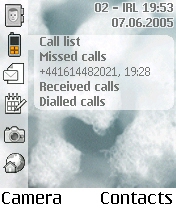
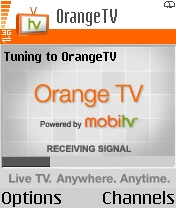
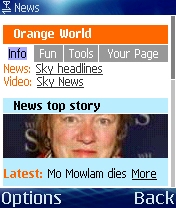
I also think it is important to realise that the functionality of a (smart)phone and the user experience is made up of three parts. Firstly the hardware and the software provided by the device manufacturer, second that added by the user in the form of third party programs or content, and thirdly the connection and services provided by the Operator. Inevitably, and quite correctly, the first and second of these provide the focus of most reviews, but we should not forget the third. As smartphones get increasingly sophisticated, the services provided by an Operator will become an ever more important part of the experience. The connection provided has always been important - after all the first function of smartphone should be as a phone. But it is services, whether operator provided or third party which will have a large influence on the user experience in the years ahead.
With that in mind I want to look at some of the services provided by Orange on the 6680. The question is - how much do they add to the offering?
The Operator Portal
Do you remember when WAP was cited as the next big thing for mobile phones? WAP was one of the most over hyped mobile technologies ever. The reality of the user experience on the late 90's small screen devices did not match the promises. However in many ways early hype was not so far from the truth - it just took a lot longer to arrive. It wasn't until screen technology improved, GPRS and 3G provided faster speeds, and XHTML browsers enabled richer design that the idea became usable. What is more, the offerings have moved beyond simple text information to a far richer experience not just in terms of content (images and video) but also other accompanying features such as location awareness. The increasing sophistication of phones has also created an increasingly two way medium - images from the phone can be uploaded to services, ringtones can be downloaded and remixed on the phone.
There is a great deal of variation in the depth of operator offerings. Comparing notes with a US friend I explained that for many tasks, such as looking up travel information, finding local information (be it fish and chips or a taxi), or simple news and information, I rarely left the portal. He by contrast rarely used the portal because it mainly consisted of being able to download games and ringtones. This downloadable content is near universal since it easy to implement and highly lucrative, but I suspect in a simple form its time is limited because users will become increasingly aware that it is easy to add content themselves or will find third party services that are better value. By contrast the local information in the US was available via portals such as Yahoo and MSN Mobile. There is an interesting fight ahead between operators and third party Internet portals, although increasingly we are likely to see co-operation. Frequently the operator portal (and the operator offering in general) uses rebranded third party services. I.e. one company provides the train times services which all the operators use, another provides a MMS to Postcard service, and probably the best known of these is the Shazzam song recognition service.
Orange's portal, dubbed Orange World, is attractively put together, and provided the expected news and information, entertainment and tools. It is divided into 3 broad areas - Info, Fun, and Tools, each of which is a top level link.
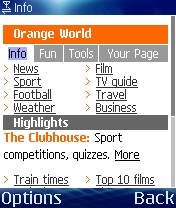
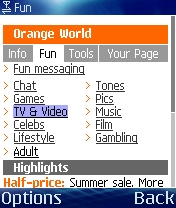
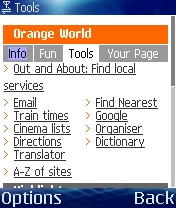
Info provides news and information in many areas. With a 3G phone such as the 6680, videos are provided in addition to the usual text and image content. In the UK at least there is not a lot of difference between portals in a broad sense, but there is often a differing focus. The 3 network became best known for showing Premiership Football, while Orange has a reputation for good Film content. However, the most frequently used news and sport summaries are very similar between networks - either provided by Sky or by ITN. 3G's promise of video downloads has been well fulfilled on Orange World and seeing someone staring intently at their mobile on the train and bus as they watch the third screen is becoming increasingly common. Other 'Info' information services include Travel (train times, directions and live pictures of traffic jams), Film (download trailers, buy tickets, and read reviews), and others.
Shared between Tools and Info is also where you find Orange's 'Where's My Nearest ... ?' service which tells you where the nearest x is (be it petrol, pizza or post office) with an accompanying map. Tools can look a bit spartan, but much of the functionality is integrated elsewhere. The downloadable guides (from Berlitz) to both languages and places are not always of a high standard and you are better off looking elsewhere. More usefully you can set up text and photo messaging alerts to notify on local weather, breaking news, or goals scored by your favourite football team.
Fun provides the expected download of ringtones, games and gossip. Orange have provided a limited number of 6680-optimised Java Games and a few games written in Symbian C++ (not that the casual user would notice), but it is the services which require a client application to be downloaded to the phone that are most interesting. These include Fireplayer, Orange Music Player, and Orange TV.
Orange World has a fourth top level link which is Your Page. It is an area you can customise to give you the latest information from areas you are interested in, you can also add things such as a location aware weather forecast, cinema listings from your area and links to favourite sections of Orange World. This customisation service is surprisingly useful, allowing you quick access to the areas you use most. The personalisation is apparent throughout the portal, for example the last few train times are retained so you can quickly look up a train on the same route as before.
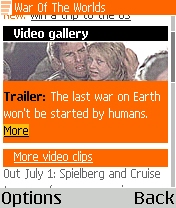
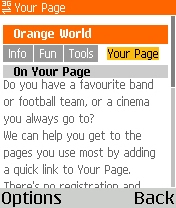
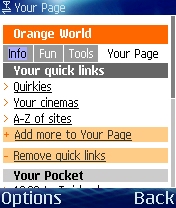
Mobile TV
With the launch of the 6680 Orange announced that Orange TV would be available on the handset. This is provided by the MoibiTV service. 6680s on Orange come preloaded with the Orange TV application or you can download it from the portal. On starting the application for the first time you are asked to subscribe to the service. The price at £10 a month seems quite high, but that does include 1GB of data to use solely with Orange TV. Personally I think a better pricing model would be per usage with a per month flat rate option also available. Currently the content is lacking - for the price paid I would expect it to be better. Various channels are available (ITN News, CNN and Cartoon Network), although some are of limited interest (Fashion TV). Special channels are rotated in and out, these have included Big Brother and Glastonbury TV. Despite what you might think the 'TV' is surprisingly watchable. A 3G data connection is required, this limits coverage and is something of an annoyance when you move in and out of reception. There is also something of a 'cool' factor. It certainly attracts a fair amount of interest from other people, especially when waiting for a delayed plane in an airport terminal. When experts cite mobile phones as the third screen they point at mobile TV as being a driver. Orange TV goes some way to achieving this, but there needs to be an improvement in both content and reception before it can go mainstream.
Orange Music Player
2005 is meant to be the year of the music mobile phone. Be it the long delayed Motorola iTunes phone, the SonyEricsson Walkman-branded phone or the iPod-like Nokia N91, everyone seems to have woken up to the possibility of music on phones. Orange have chosen the Chaoticom mobile music service to implement a music offering. The Orange Music Player is a client application that you download to your phone, which you can then use to buy tracks from Orange, and then play them back. The application itself is a bit limited, with no search options, and rather long downloads to get the initial catalog. The preview, purchase and download process is painless and it integrates with your existing billing. At around £1.50 per track the price isn't too outrageous. However, you can't add your own songs which means that building up a reasonable collection is going to get expensive. Worse still, there is no way to transfer purchased tracks to any other music player on the phone. People are not going to very keen on buying music again just to play it on their mobile (or buying on the mobile and then not being able to play it elsewhere). It is a nice idea, but until it can be tied in with a more generic service (be that iTunes or Yahoo Music) or have less restrictive DRM it is a bit of a dud. I do not think it is going to get much use.
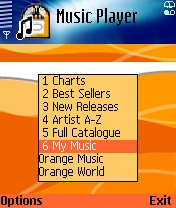
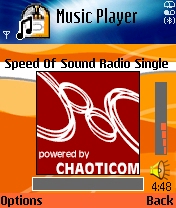
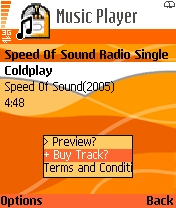
Fireplayer
Fireplayer is another client program, one that allows you to remix ringtones. In order to use it you must download Fireplayer ringtones, these cost £3.50 (compared to £1.50 for most other tones), which is perhaps on the expensive side (but then all ringtones are overpriced, given that you can make your own for free - Ed.). Fireplayer ringtones consist of multiple tracks that can then be mixed in different ways using the the Fireplayer software. Normally there are a couple of 'beat', a few 'vocals', a few 'instrumental' tracks and a few 'fxs' per Fireplayer ringtone. You can also speed up, slow down and combine the tracks in quite a number of different ways. I'm not a music expert, but even my creations didn't sound too bad. The end result is rather satisfying and unique to you. You can save your finished creation and use it as a ringtone. Fireplayer is a simple idea, but it is well executed and adds a completely new level to the lucrative ringtone business model. There is a lot more fun to be had in mixing your own than simple downloading.

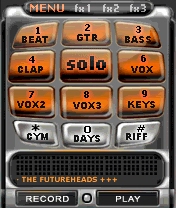
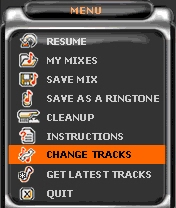
Orange Online Services - SyncML
Through their web site, and not as heavily advertised as it should be, is Orange's Organise service (a rebranded version of Voxmobili's SyncML server). This, with a bit of setup, allows you to synchronize (or backup) your contacts, calendar and tasks via SyncML to the Orange server. You can view and edit details online and sync back to the phone. It is a shame that this is not easier to set up and is not available out of the box, as I'm sure this will put some people off. There have also been some reports of the sync process being unreliable, although I did not have any problems. People interested in this kind of functionality who are not on Orange should check out Mobical.net. This kind of service has a lot of potential, although a lot of people will be happy with the (flawless) sync provided by the current version of PC Suite.
The Phone Customistion
Orange customises the phone in two different ways, firstly by adding extra software and secondly replacing or customising existing software. Orange provide three additional programs: Guide, Backup and Downloads. Downloads promises to provide updates and additional programs, but there were none available when I checked the service. Backup offers an over the air backup solution that works fine and can save you from catastrophic data loss - if you remember to backup. There does not seem to be much incentive to use this form of Backup given data rates and the free alternative via PC Suite. Guide is a useful help guide which introduces new users to many of the phone's functions and capabilities. For the novice to have on-device help is a great idea, though the more experienced user will know what they're doing and it is no replacement for the included manual.
If you buy the phone direct from Orange you will also be ready to go in terms of settings (such as GPRS), and Bookmarks for Orange World are included in the browser. Orange has opted to change the idle screen, something which has generated quite a lot of controversy, especially since it can not be customised or removed very easily. The new Idle screen, referred to as the Orange Home Screen, takes the same style as that seen on the P910i or the C500. There are a list of icons down the left hand side of the screen allowing quick access to Contacts, Messaging, Calendar, Gallery and Orange World. Summary information about new messages, missed calls, upcoming appointments, battery strength, signal strength, Bluetooth and sound status is also displayed. Some will find the information displayed an improvement on the standard Idle screen, but others will rue the loss of the Active Idle screen and navigation key shortcuts. I feel that Orange deserve credit for trying to create a single user experience across their range of phones, but I wonder whether it is worthwhile when it is only skin deep; furthermore, it should be a removeable option.
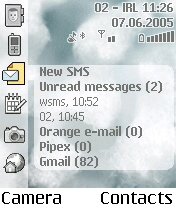
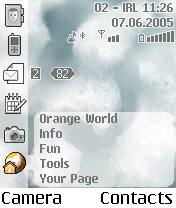
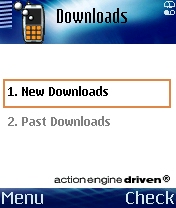
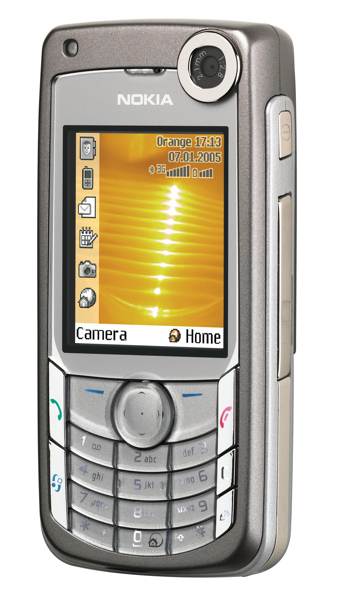 So what do I think of the 6680?
So what do I think of the 6680?
Having talked about the services available on the Orange 6680, I wanted to briefly mention the 6680 itself. That this is the third release of Series 60 (2.6 following on from 2.0 and 1.0) really shows. The UI is slick and a lot of the early rough edges are gone. Menus wrap around as you would expect them to, Connection Manager and Settings Wizards simplify phone set up and options. There is a file manager installed by default and there is extra bundled software (Quickoffice viewer and PDF viewer) which adds powerful extra functionality. All in all, the software is very polished.
The hardware itself is extremely good. The screen stands out in nearly all situations, the keypad is easy to use, and the camera is of sufficient quality to use for quick snap shots. The maturity of the smartphone is evident most of all when you compare it to an earlier model. Try going back to a 3650 and you will see a surprising difference.
And what about 3G? Video calling is supported, but I've yet to use this except when showing off the phone. Video calling was another of those over hyped mobile technologies. Where 3G really does make a difference is in data rates. There is still a bigger lag time than on a desktop, but pages and especially images appear far more quickly, checking email becomes a breeze rather than a long chore, and of course video downloads appear in a matter of seconds rather than minutes. 3G really makes a difference when using data services - and if you are a smartphone user it is worth getting a 3G handset for that alone.
Conclusion
The operator offering is becoming an ever more important part of the smartphone experience. To get the most out of the phone most users are going to rely heavily on the operator offerings. While it is possible to set up your own SyncML server it is is a practical proposition for very few people. MobilTV, Fireplayer and Music services are not going to have universal appeal, but for those that do use them they add another dimension of use. More importantly the ease with which these services can be accessed are going to be fundamental in spreading smartphones to the mass market. Symbian and Nokia often talk about taking the Symbian OS and Series 60 to the mid and low tiers, but they do not talk about what will drive this. While cost is a major factor, there must also be a consideration of what people will use the phone for.
And the 6680 on Orange? I think it is a very attractive package for any user. A great phone, but with more added via a compelling operator offering. It puts an incredible amount of power and information in your pocket. There is a lot of room for improvement (the Orange Music Player being the pick of the duds), but there are also innovative services (the pick being Fireplayer). Of course there will always be one more service or feature to add, a better or faster way to access it, but with the 6680 and similar devices the power of mobile looks set to move from the geek-day to the everyday.
